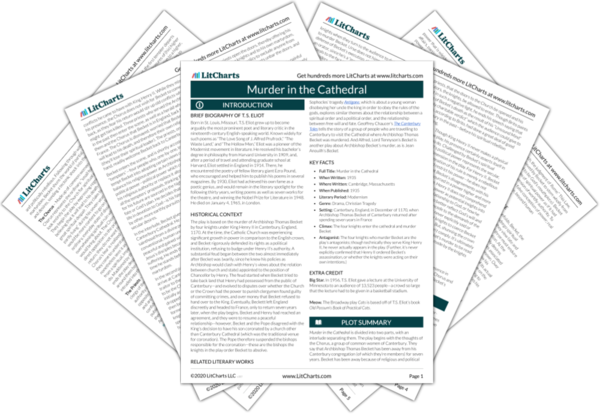Used by Becket as an image to describe the interdependent relationship between acting and suffering, the wheel represents the wholeness and indivisibility of the divine, spiritual reality behind the everyday world of (medieval Christian) human experience. It also shows how that wholeness appears as a fundamental contradiction to human thought. The wheel, as a metaphor, provides a tool for thinking about how the divided world of human thought (i.e., divided between such partial, finite categories as acting and suffering) is undivided, singular, and whole from a divine perspective.
The wheel of time, which Becket says both spins and remains still simultaneously, demonstrates how impossible it is to conceive, in Becket’s world, of the divine realm where motion and stillness, energy and inertia, merge and become the same. For any motion to be perceived at all, there must exist a sense of stillness or motionlessness against which it can be compared, and vice-versa. But to see both motion and stillness as the same would destroy the meaning of the two categories; neither motion nor stillness exist as separate, distinct categories in the realm of divine perception. The two are interdependent; they depend on one another’s existence to exist separately from one another. But this interdependence in and of itself—how the two categories reinforce one another’s sense of meaning—cannot be reduced to either one of the two, separate categories themselves.
Interdependence—a property of the singular, whole, undivided nature of the divine perspective—eludes the partial categories of human thought, like the revolution of a wheel that is simultaneously still. Thus the spiritual world, in Murder in the Cathedral, is something which demands self-sacrifice and submission in order to connect with it. To be closer to God and fate, Becket, the Chorus, and the priests must all fundamentally alter the way they think about themselves and their relation to the divine. They all come to think of themselves not as fundamentally cut off or separate from the divine, but somehow as integral to, a part or an instrument of, the divine and the way it unfolds in the form of fate.
The Wheel Quotes in Murder in the Cathedral
They know and do not know,
what it is to act or suffer.
They know and do not know, that acting is suffering
And suffering is action. Neither does the agent suffer
Nor the patient act. But both are fixed
In an eternal action, an eternal patience
To which all must consent that it may be willed
And which all must suffer that they may will it,
That the pattern may subsist, for the pattern is the action
And the suffering, that the wheel may turn and still
Be forever still.
We do not know very much of the future
Except that from generation to generation
The same things happen again and again.
Men learn little from others’ experience.
But in the life of one man, never
The same time returns. Sever
The cord, shed the scale. Only
The fool, fixed in his folly, may think
He can turn the wheel on which he turns.

















